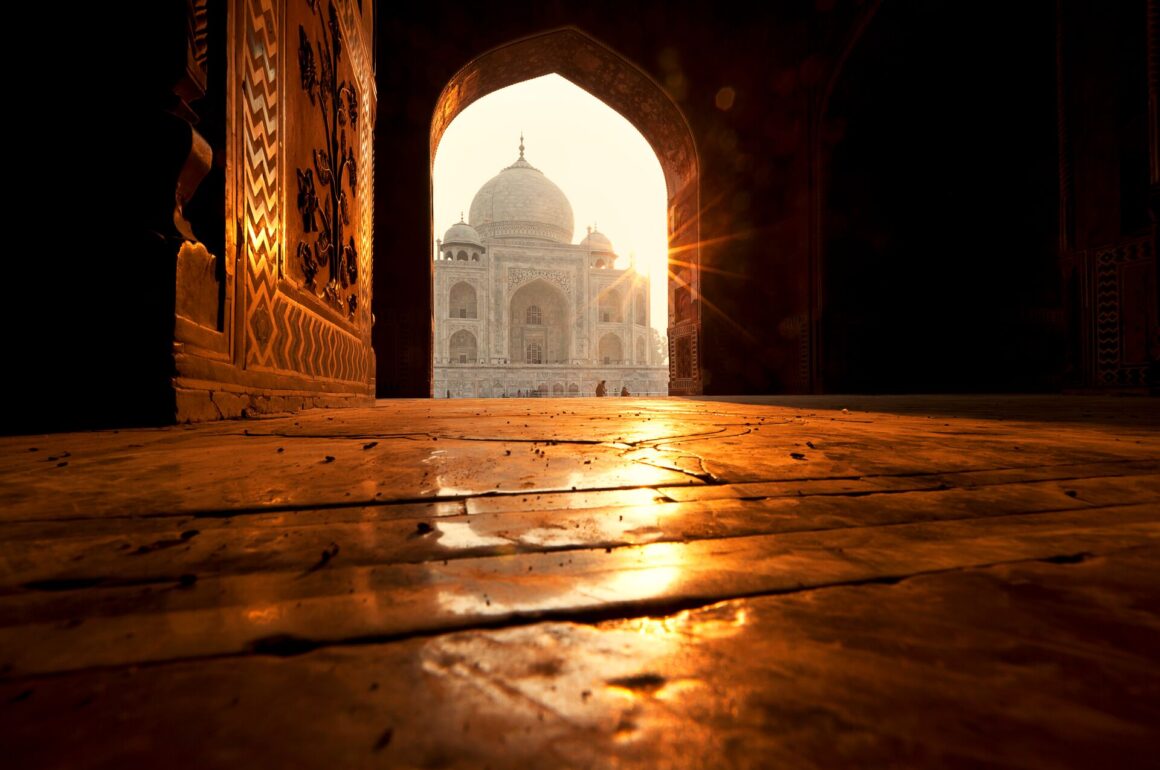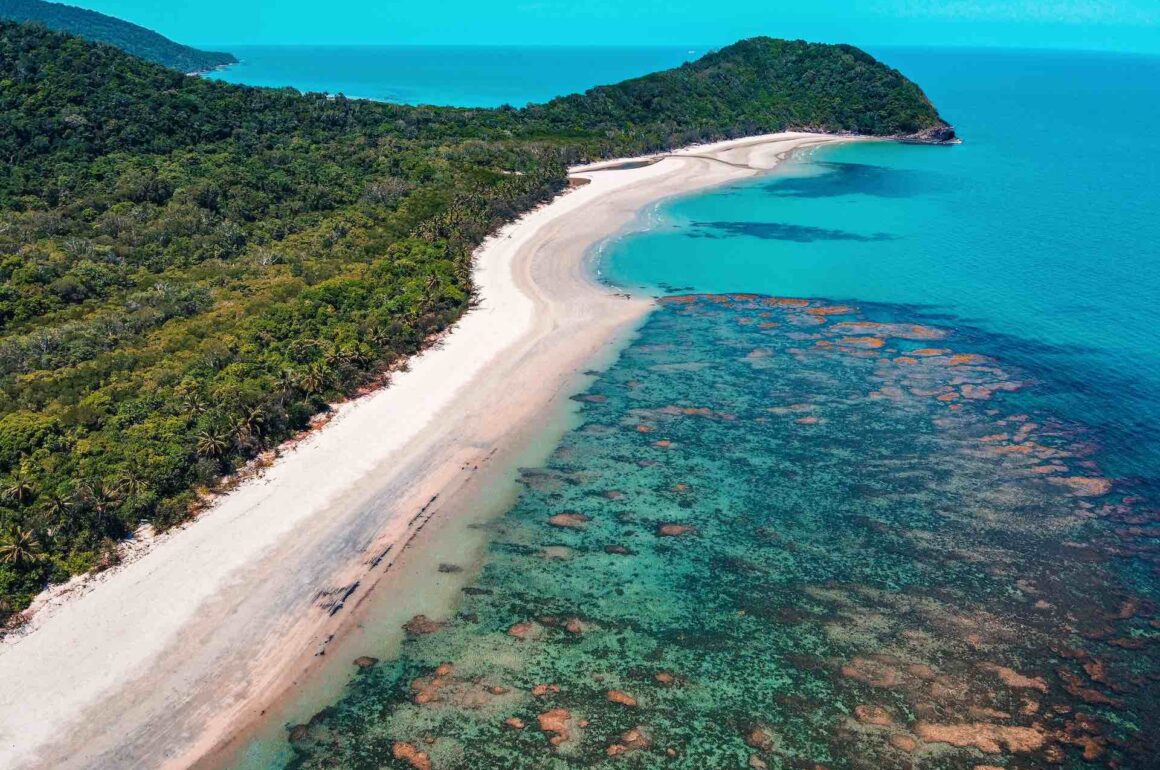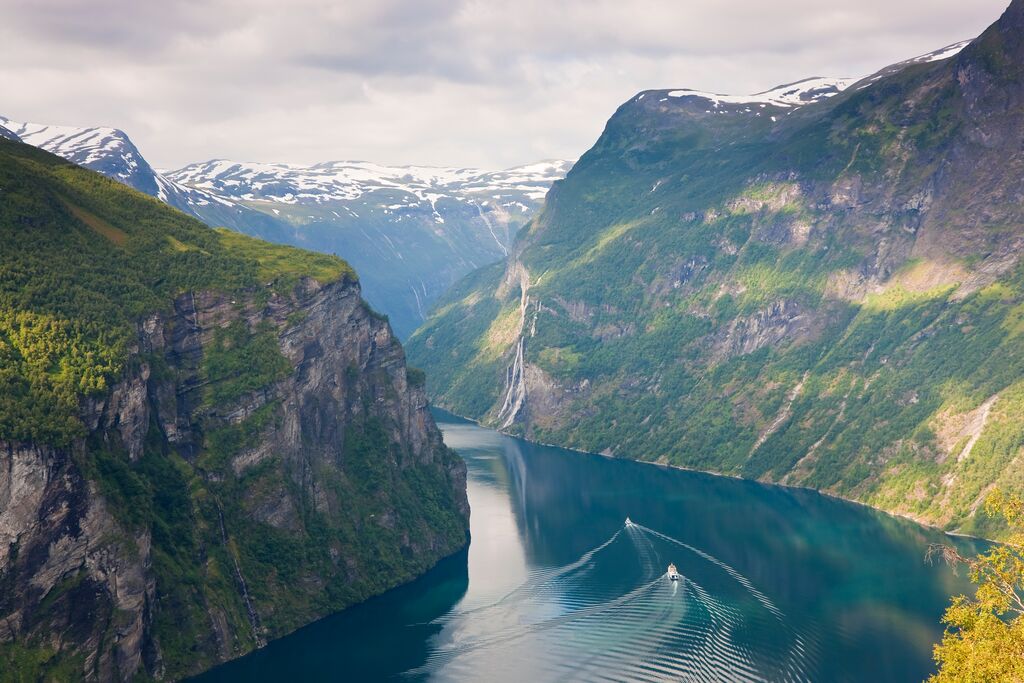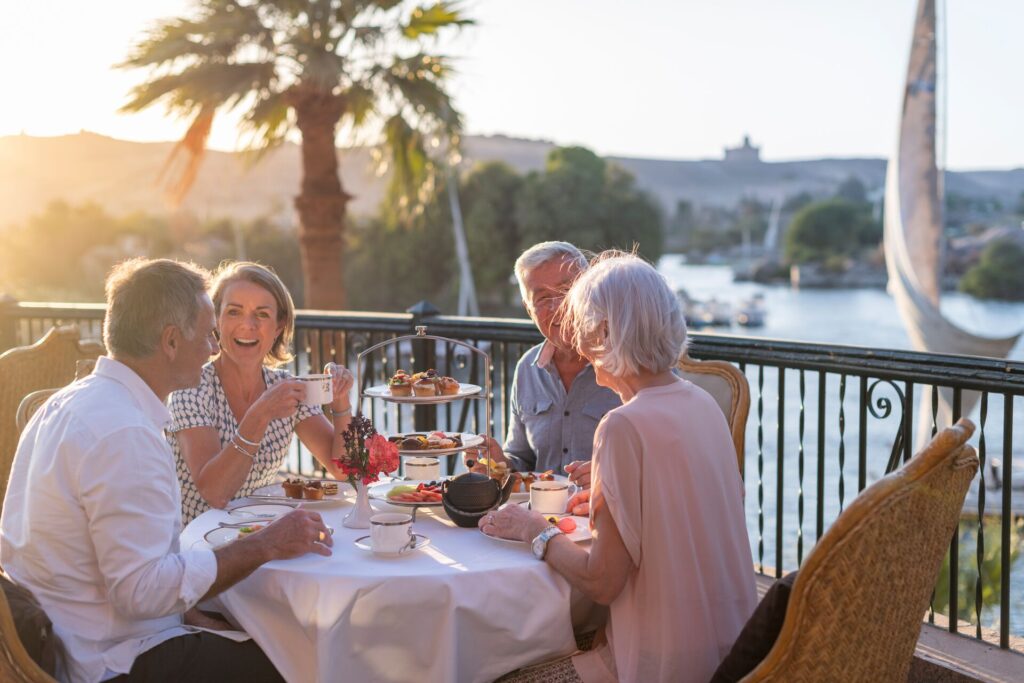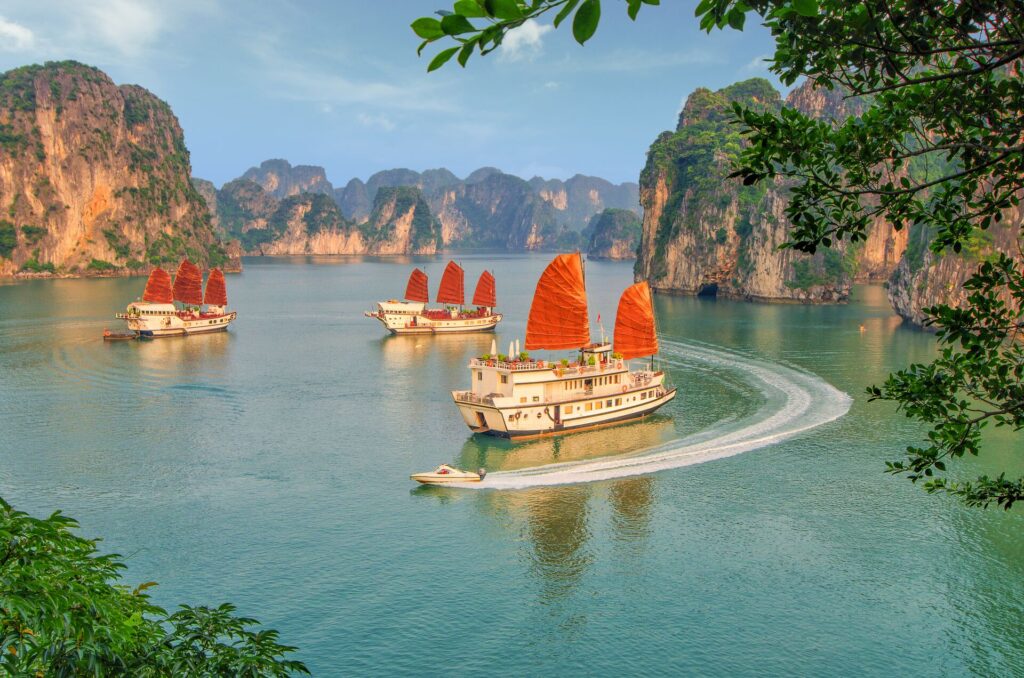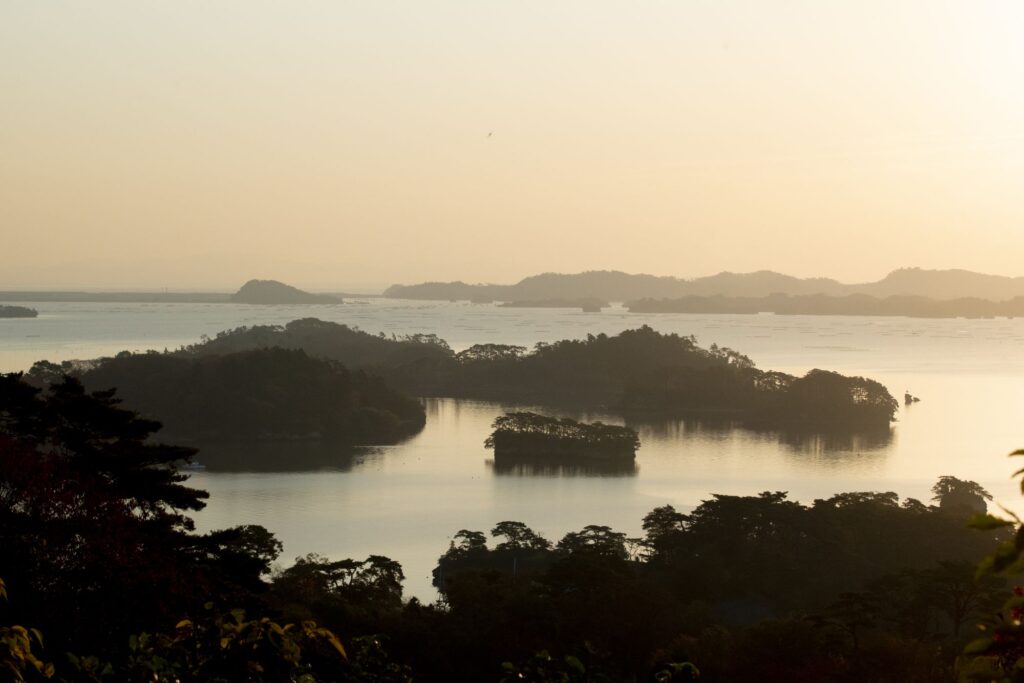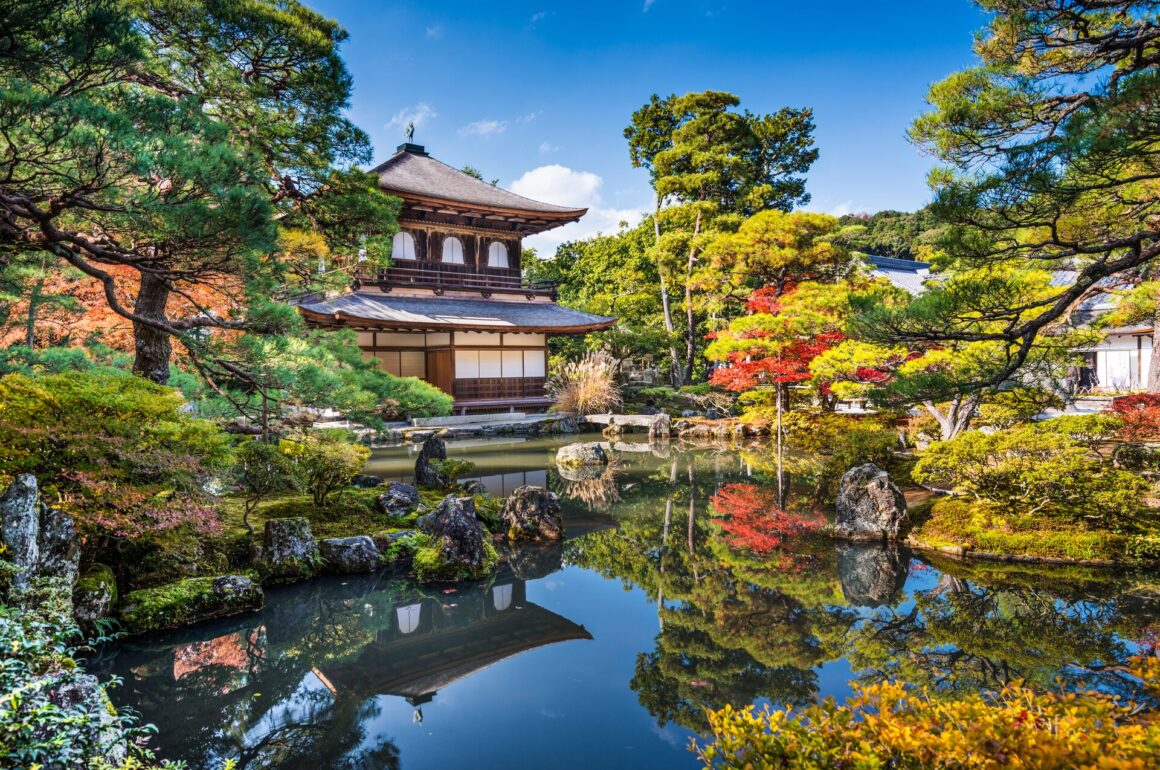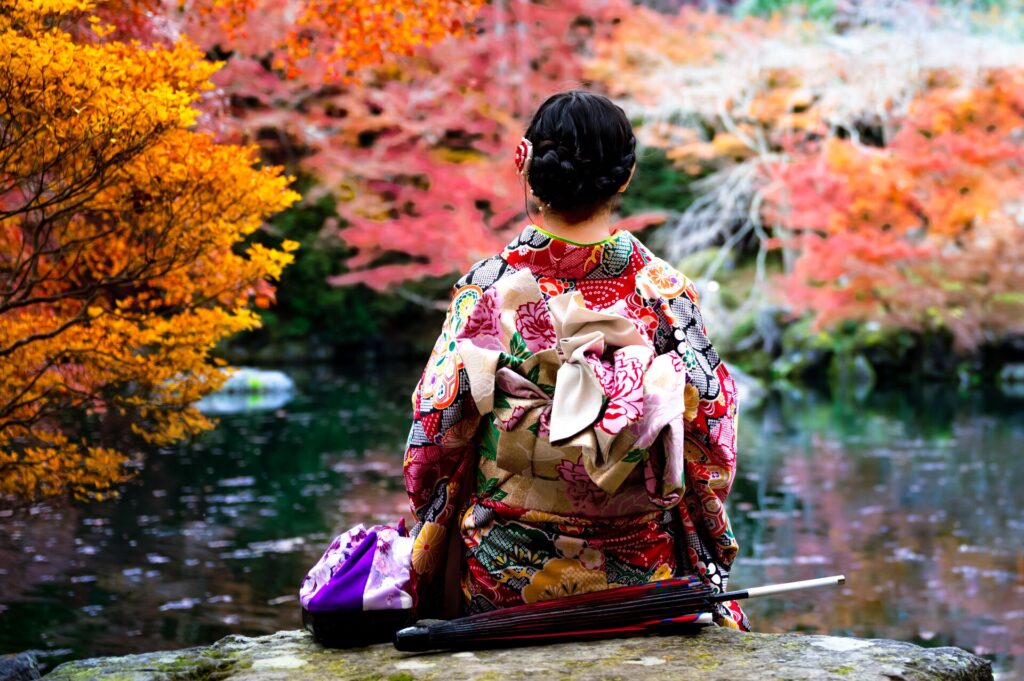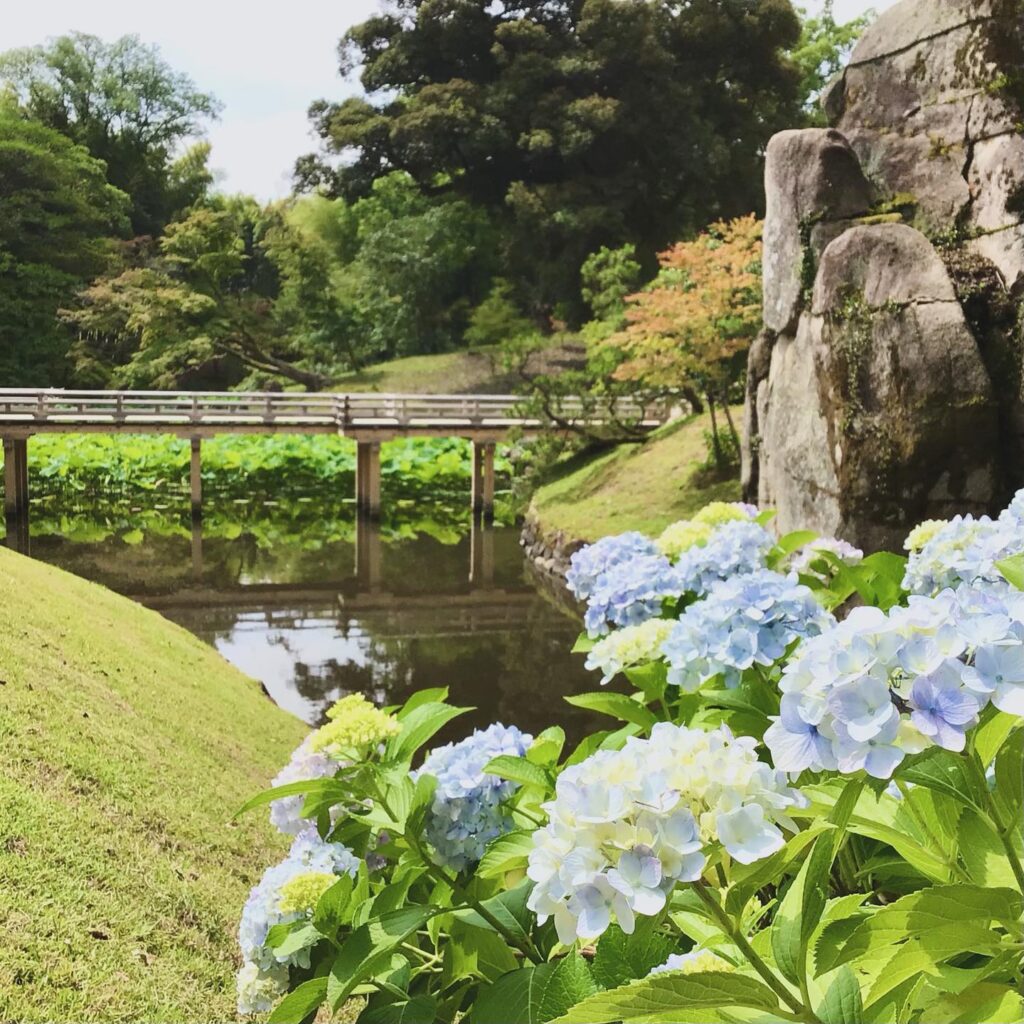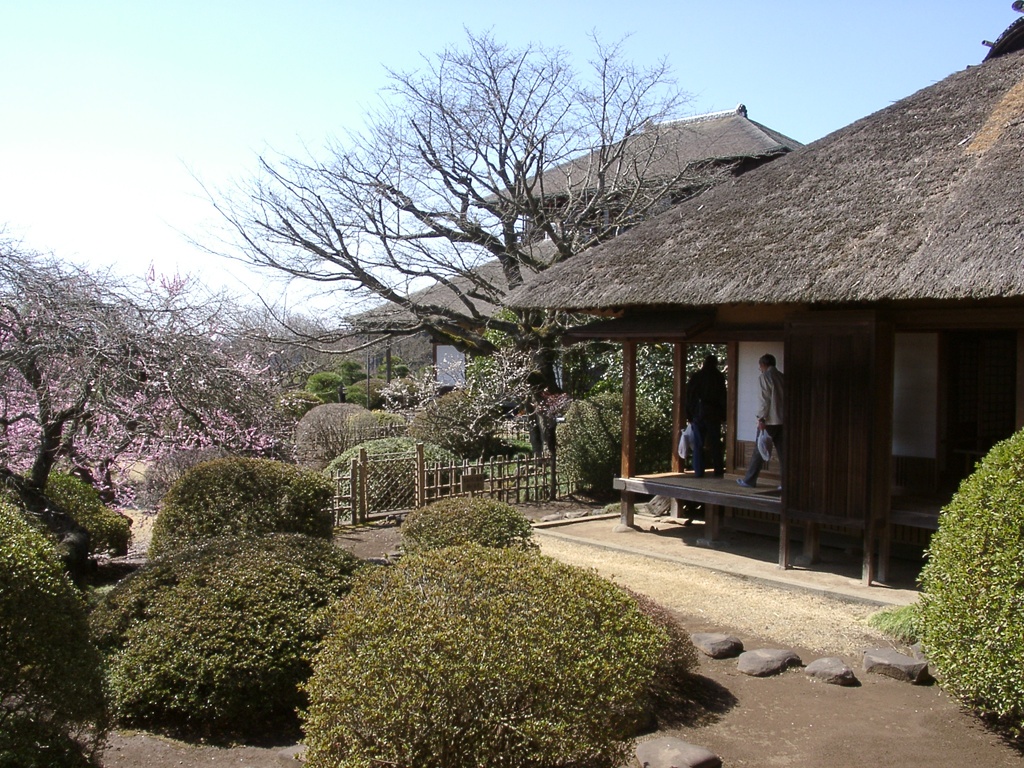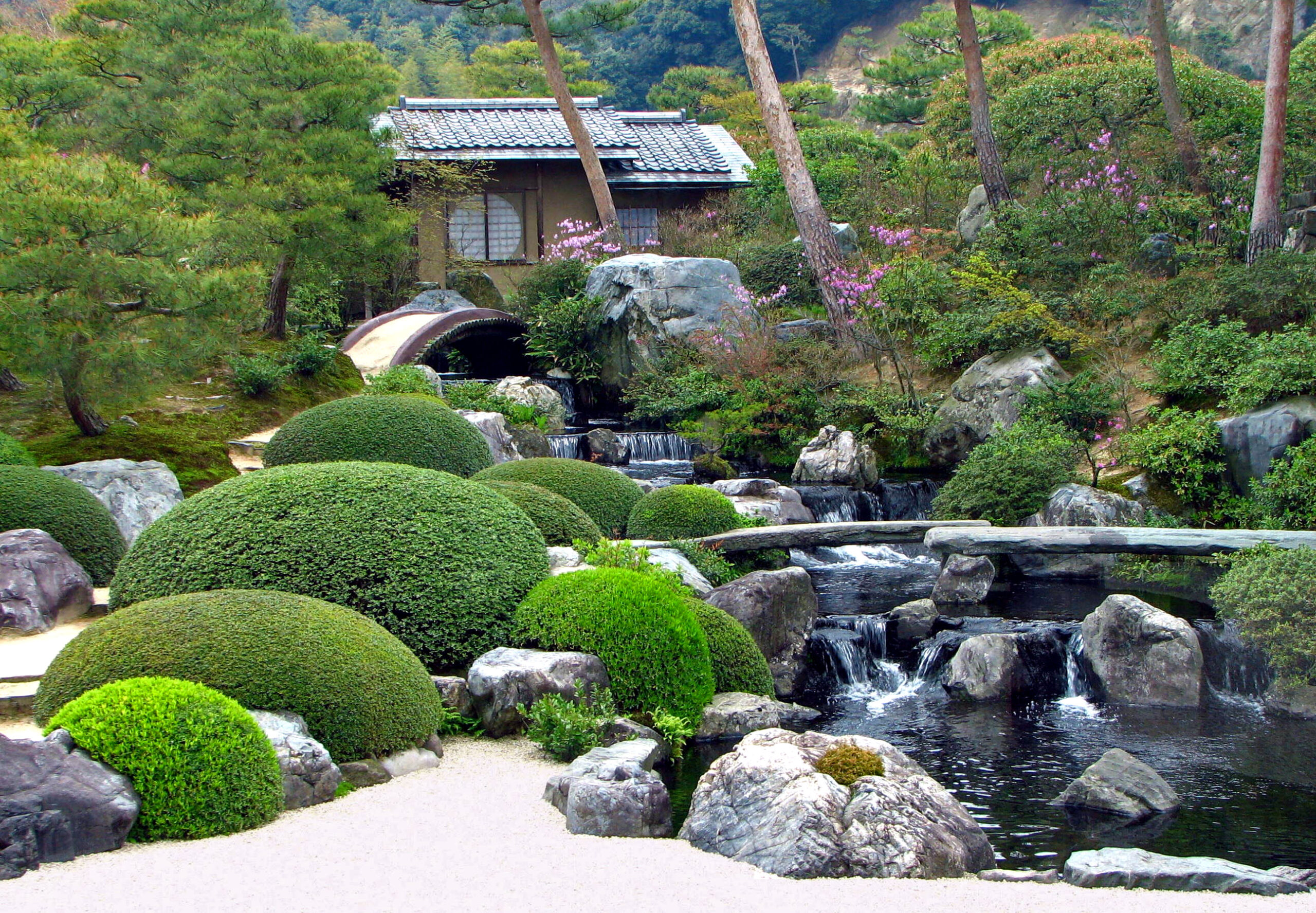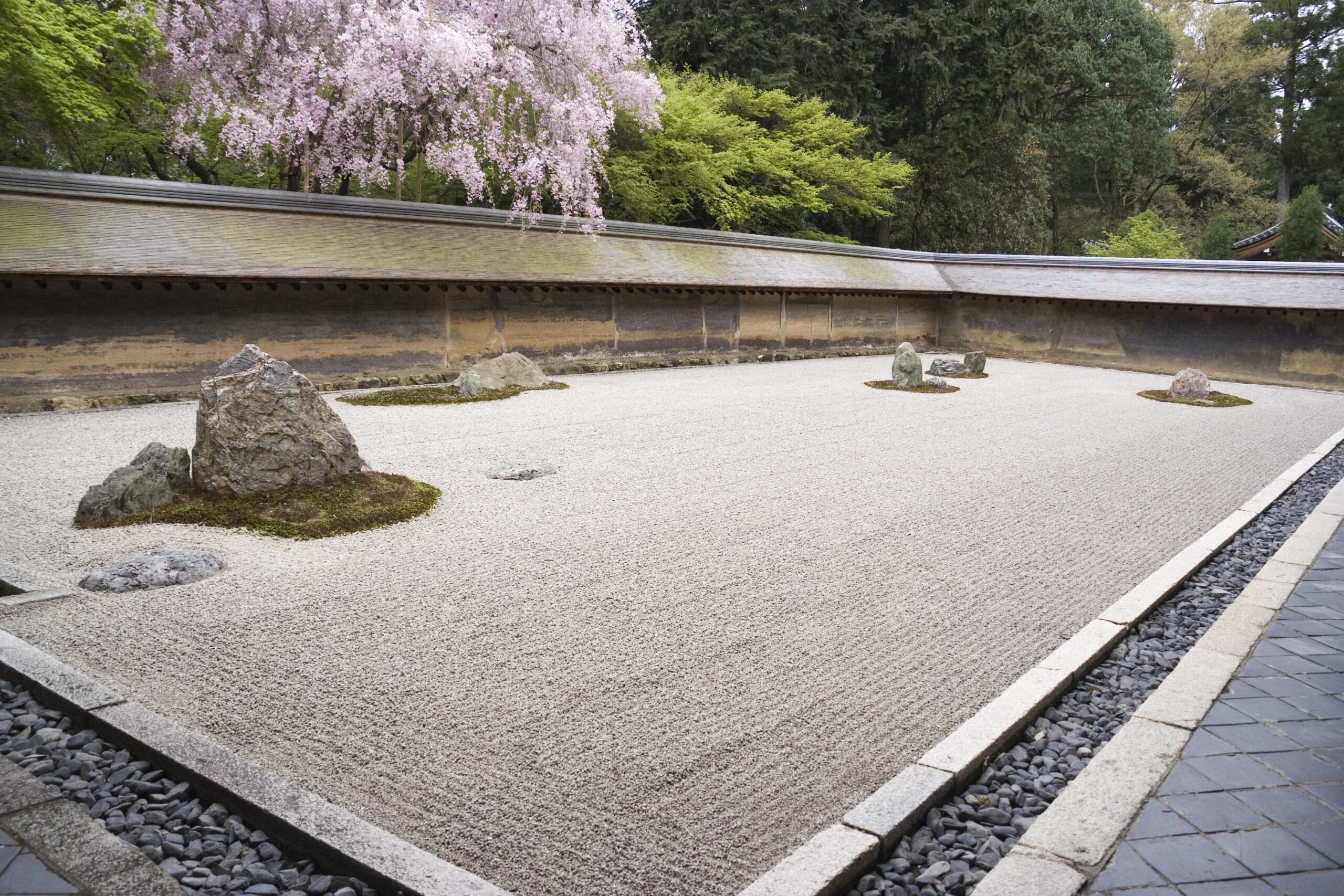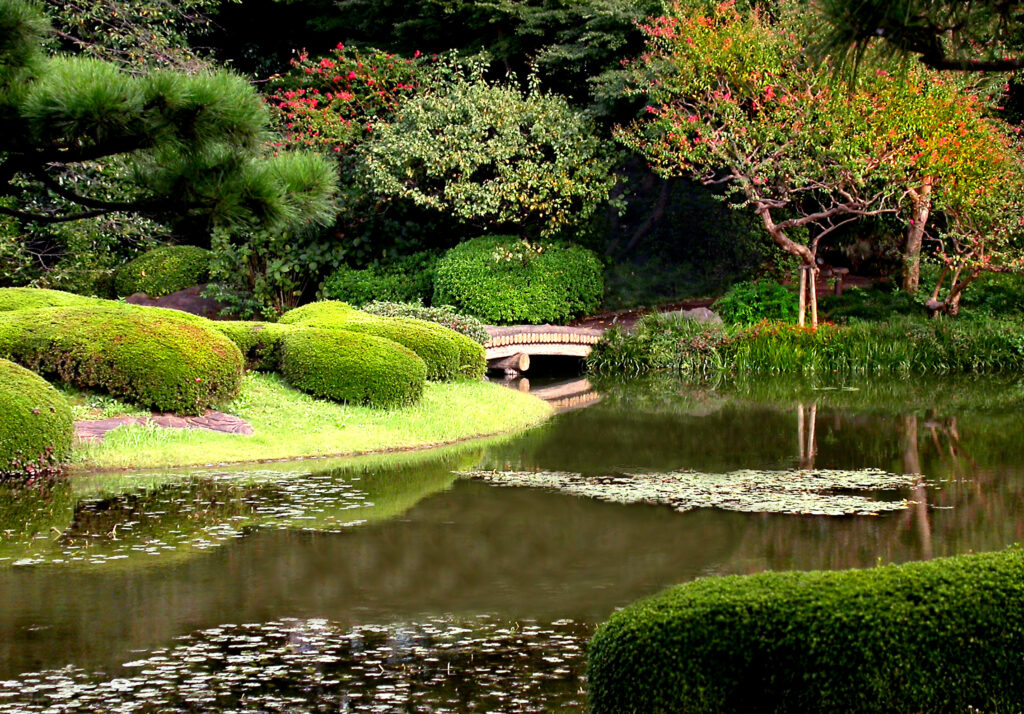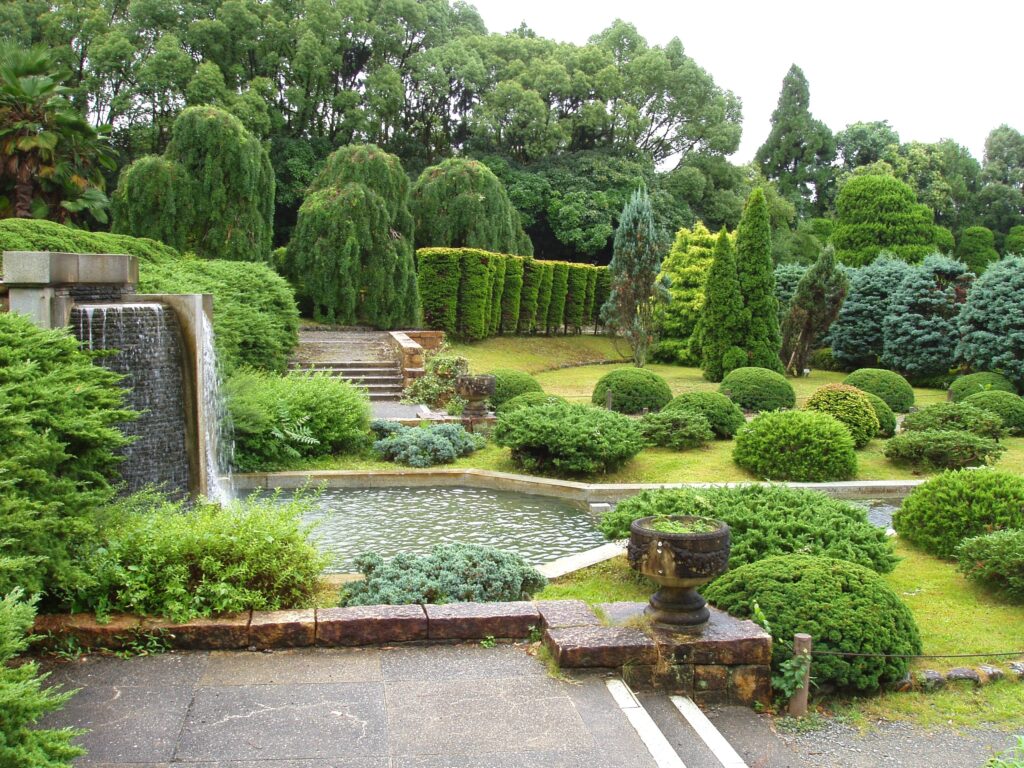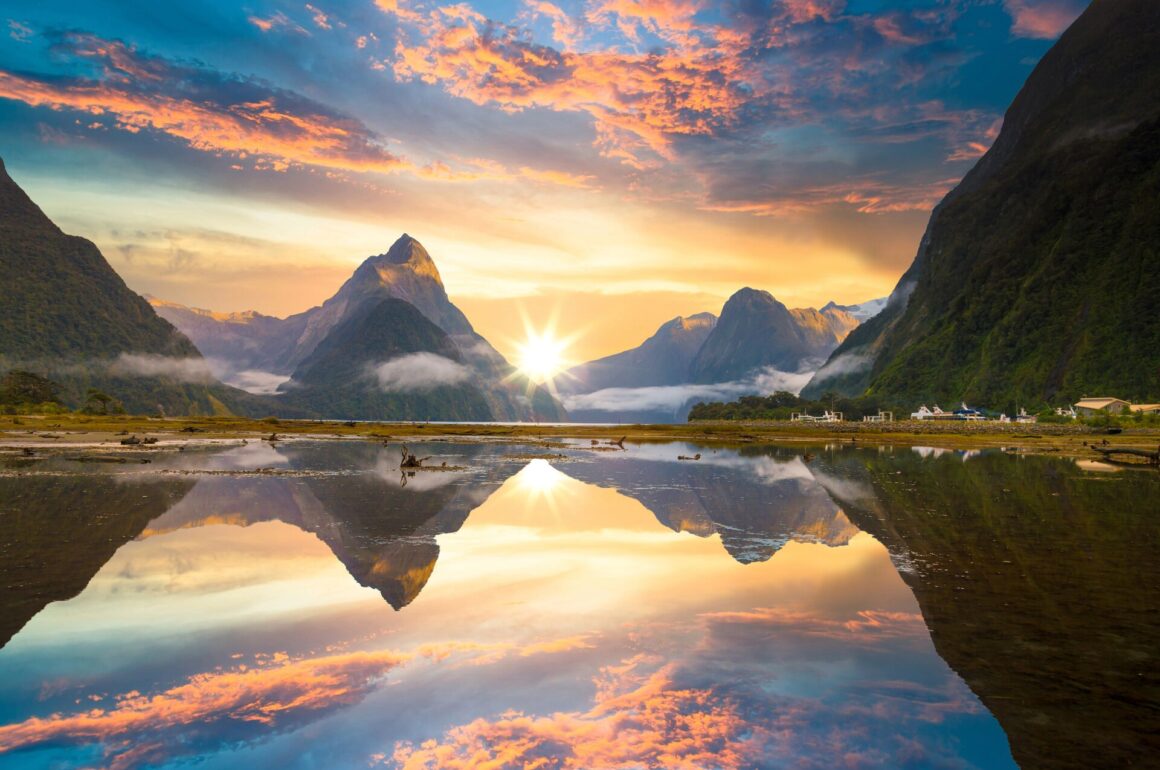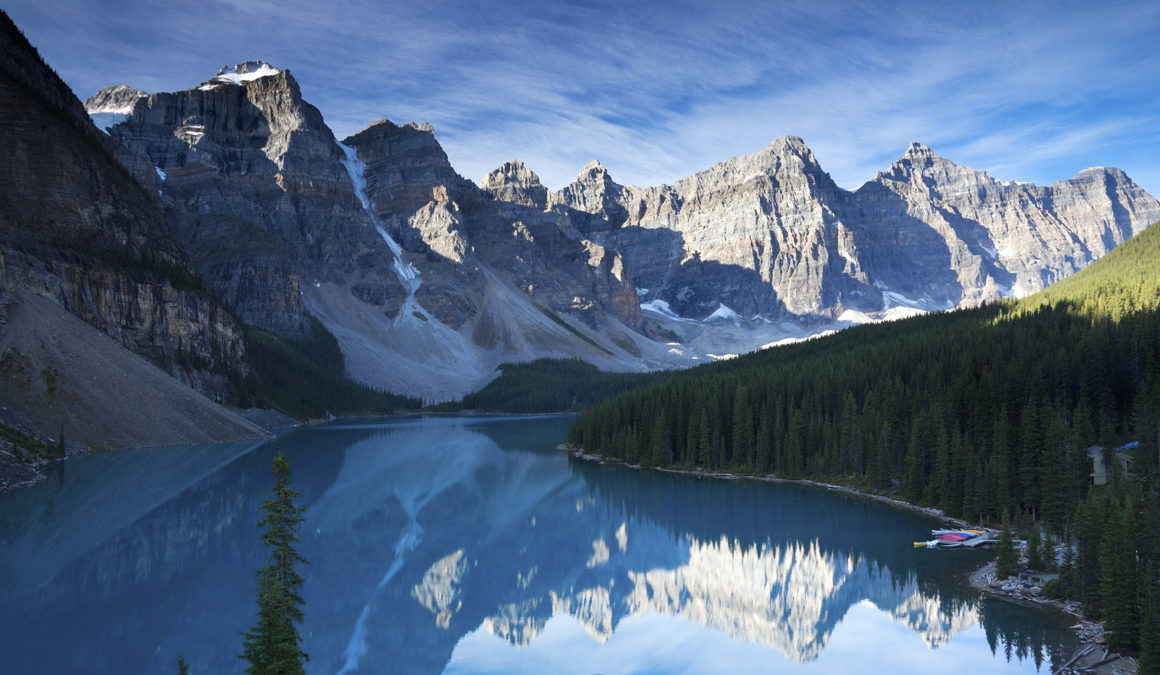If you’re already planning next year’s trip to Asia and need some inspiration, then discover the best places to visit in Asia by Luxury Gold. There are countless beautiful places in Asia, whether you’re after picture-perfect beaches, mountains, ancient temples and civilizations, or sustainable luxury hotels – the world’s largest continent has it all.
Uncover the best places to visit in Asia, and make your 2025 the year of exploration
Siem Reap, Cambodia
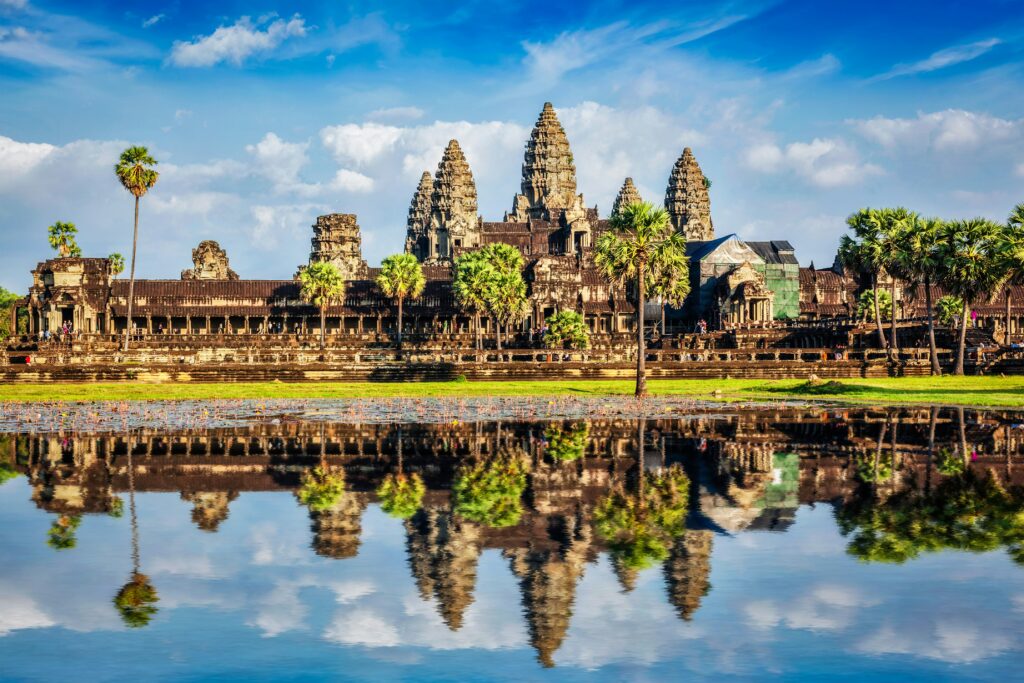
There’s a reason why Siem Reap, a town in northwestern Cambodia, is a popular destination for many travelers beacuse it’s one of the best places to visit in Asia when it comes to awe-inspiring temples and UNESCO listed sites. When you visit Siem Reap with Luxury Gold, you’ll stay in the Angkor Phokeethra Golf and Spa Resort, regularly awarded as Siem Reap’s best golf resort, where you can relax with views the ornate gardens after a day of exploring ancient ruins.
Of course, there’s so much to see beyond your hotel; you’ll dine at Mahob, a stone’s throw away from Angkor Wat located in a cozy garden setting surrounded by trees, flowers and a lotus pond. A must-see when in Siem Reap, you’ll explore the Angkor Archaeological Park with a renowned archaeologist who will enlighten you on the largest religious complex on earth. See what’s happening in modern-day Cambodia as you attend Phare, an incredible show that sees local artists use theater, music, dance and modern circus arts to tell uniquely Cambodian tales brought to life by Phare. This MAKE TRAVEL MATTER® Experience supports the lives of at-risk Cambodian youth through gainful employment in the arts.
See it on: Cambodia and Vietnam in Style
Maldives
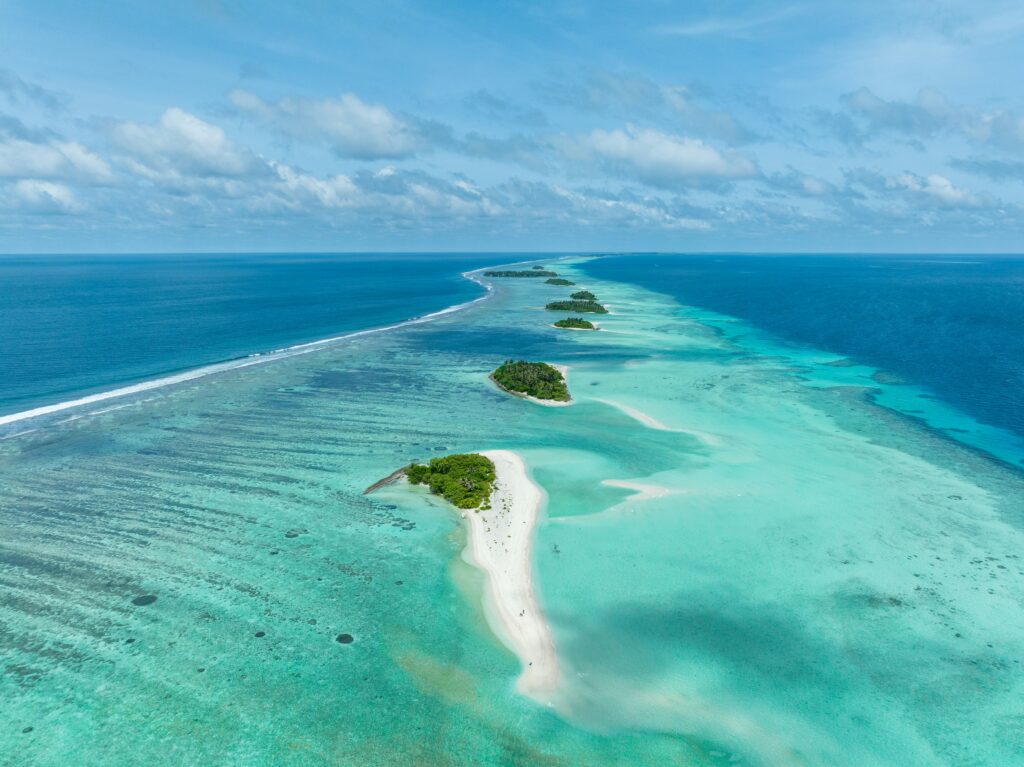
For a more ‘no shoes, no news’ kind of vacation, the Maldives is one of the best places to visit in Asia, and its tranquil escapism will leave you feeling truly rested and recharged. One of our best luxury hotels in the world, Soneva Fushi in the Maldives offers the ultimate barefoot luxury experience. Set amidst the stunning Baa Atoll UNESCO Biosphere Reserve, the resort is a paradise for those seeking a sustainable escape in a beautiful and intimate setting.
Gourmet dining options range from the dinner in the treetops to beachside barbecues under the stars for experiences you’ll never forget. The resort makes use of organic produce from its own gardens, meaning the food can even outshine the setting – though with special dining experiences such as the Astronomical Dinner Cruise and the Desert Island Picnic, the views will be unparalleled.
Related reading: These Are the 10 Best Luxury Hotels in the World
Osaka, Japan
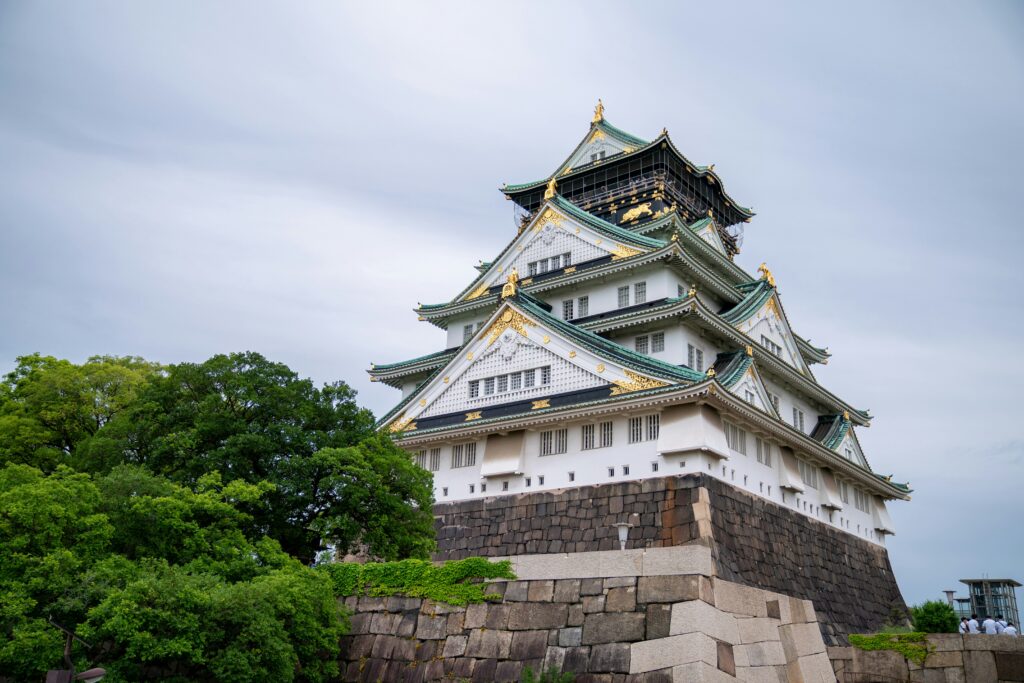
Any trip to Japan is going to be a culinary delight, but Osaka is one of the best places to visit in Asia for food-lovers. Often overlooked in favor of Kyoto, a trip to Osaka will allow you to explore this bustling city, visiting the Tenma, Tsuruhashi, and Shin-Sekai neighborhoods in search of the best teppanyaki. When you visit Osaka with Luxury Gold, you’ll discover why Osaka is known as the ‘kitchen of Japan’ as you stroll through Donburi street with a Local Expert, taste local specialties like takoyaki, crispy battered balls of octopus, spring onions and ginger. When you need to walk off some of the delicious food, you’ll explore the fascinating Osaka Castle, and visit the top of the Floating Garden Observatory in the Umeda Sky Building for incredible city views.
See it on: Majestic Japan
Agra, India
 No visit to India is complete without a trip to Agra, home of the Taj Mahal – but there’s no better way to see this popular destination than with Luxury Gold. Your hotel, an oasis away from the city’s busy streets, is just a stone’s throw away from the Taj Mahal, and you can even see views of the UNESCO World Heritage Site from the pool. You’ll rise before the sun on one of your days in Agra to view the Taj Mahal. With the light of dawn and fewer visitors you’ll have time to fully appreciate its grandeur in peace, accompanied by only the birds and monkeys.
No visit to India is complete without a trip to Agra, home of the Taj Mahal – but there’s no better way to see this popular destination than with Luxury Gold. Your hotel, an oasis away from the city’s busy streets, is just a stone’s throw away from the Taj Mahal, and you can even see views of the UNESCO World Heritage Site from the pool. You’ll rise before the sun on one of your days in Agra to view the Taj Mahal. With the light of dawn and fewer visitors you’ll have time to fully appreciate its grandeur in peace, accompanied by only the birds and monkeys.
You’ll leave the grandeur of the monument and meet the community living in the shadow of the Taj Mahal when you take a Mughal Heritage Walk. Discover hidden gems of the area and learn about daily life in the ancient village with impressive vistas of India’s most famous monument. Through this initiative, tourism helps suppoprt the community and improve their living conditions.
The views continue as you visit the impressive fortress in Agra, delving into the history of the Mughal Dynasty who ruled their empire for over 300 years. Glorious mosques and fairytale palaces are protected within its walls. Get in touch with today’s Indian culture and society as you visit a private colonial bungalow for high tea, meeting the host family and listening to their stories about the British Raj.
See it on: Essence of India
Phang Nga Bay, Thailand
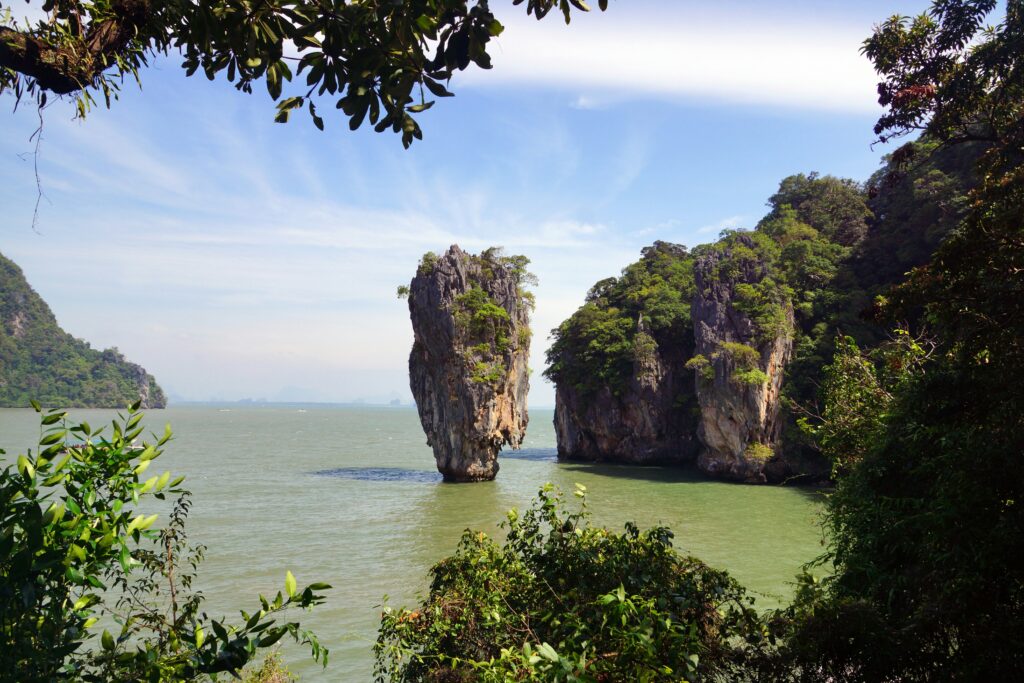
Phang Nga Bay, also known as Ao Phang Nga National Park, may be one of the best places to visit in Asia – especially for film buffs, who’ll recognize it as the backdrop for the 1974 James Bond movie The Man with a Golden Gun, featuring Koh Tapu island. Its distinctive limestone cliffs and striking rock formations give it an otherworldly aura, supported by mangrove forests and small islands dotted around. Found between southern Thailand’s mainland and Phuket Island, here you can explore countless caves and lagoons, and snorkel along coral reefs.
One of the best luxury hotels in the area, Six Senses Yao Noi offers cliffside private villas that feel like staying in a tree house, with incredible views over Phang Nga Bay. The boutique hotel is designed using natural materials that harmonize with the landscape, and when it comes to dining you can relish local, seasonal ingredients. For exclusive dining head to the Hilltop, where you can relish a Thai dinner with exceptional bay views.
Singapore

The glamor of Singapore can’t be underestimated, with futuristic cityscapes, grand gardens, and incredible restaurants waiting within the city. Take a ride on the Eastern & Oriental Express, as you journey from the urban buzz of Singapore deep into the Malaysian jungle, and back again on this slow and luxurious journey. Don’t miss Singapore’s annual thrill as Formula 1 returns each September at the iconic Marina Bay Street Circuit. It was F1’s original night race, and the city lights almost outshine the cars. When it comes to dinner, both fine dining and authentic street food are covered; don’t sleep on the latter, with Hawker Centers offering some of the best food in Singapore – Chan Hon Meng was the first Singapore street food chef to win a Michelin star in 2016 for his stall, Hawker Chan.
Nuwara Eliya, Sri Lanka

The unique charm of Nuwara Eliya – a lush, picturesque hill city in central Sri Lanka’s tea country – is that it’s a far cry from the bright sunshine and cloudless beaches you’ll see on postcards, although that doesn’t make it any less picture perfect. At 1,800 meters above sea level you’ll find cool, crisp weather with highs of 22° (72ºF) in April, the region’s hottest month, as well as misty clouds that give it the name ‘Little England’. Like England itself, it’s the kind of climate that invites you to curl up with a steaming cup of tea – which you’ll be doing after a tour of one of Nuwara Eliya’s many historic tea estates. We promise you haven’t tasted tea like this before, with whole Ceylon tea leaves bringing a much more delicate flavor as they’re brewed right at the source.
Outside of the tea estates, the cooler climate offers the perfect conditions for dramatic, misty hikes through the nearby forests, while the Nuwara Eliya Golf Club, one of the oldest golf clubs in Asia, is definitely worth a visit – and contributes to making this one of the best places to visit in Asia.
Mt. Fuji, Japan
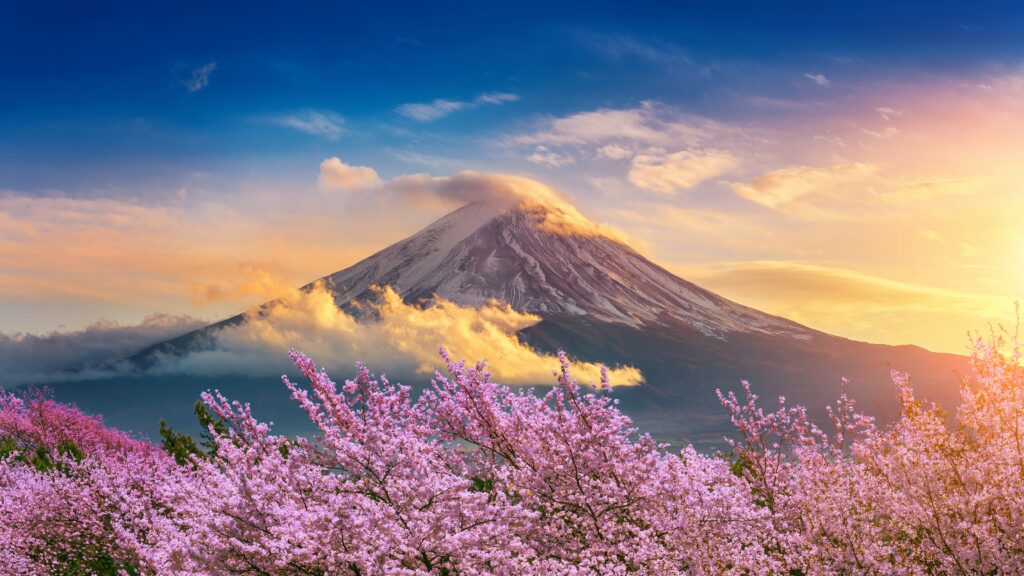
There’s no bad season to travel to Mount Fuji: in the summer it’s officially open for climbing; in fall the foliage turns a symphony of burnt orange and reds; in winter you can ski; and in spring, cherry blossoms are in bloom. While you can spot Fuji on the train between Tokyo and Osaka, it’s worth visiting for more than a fleeting glimpse. The Fuji Five Lake (Fujigoko) region at the northern foot of the mountain provides picture-perfect views of the mountain, as do Lake Kawaguchiko’s onsens (hot springs).
See it on: Majestic Japan
Jaipur, India
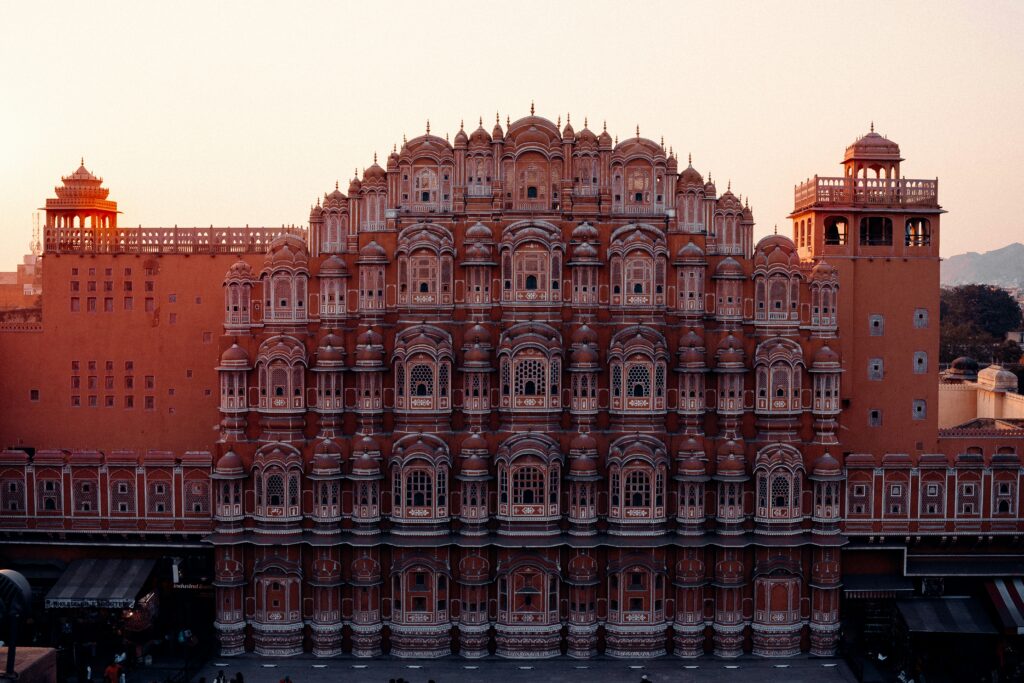
The capital of India’s Rajasthan state, Jaipur is affectionately known as the ‘Pink City’ for its trademark, dusty pink building color, the most famous of which is Hawa Mahal, a five-story pink sandstone structure in the heart of the city with 953 small windows. If picture-worthy architecture and incredible palaces are on your list, Jaipur will deliver in spades.
Unique experiences are waiting on your Luxury Gold journey to Jaipur, as you enjoy a private access tour around Jaipur City Palace including the maharajah’s personal living room, normally off limits to visitors, before you savor an Indian-inspired high tea on the regal terrace. More architectural marvels await as you stroll through the intricately designed complex of courtyards and halls of Amber Fort, decorated with shimmering walls and ceilings. Embrace the hubbub of the city as you visit Jaipur’s flower and spice market, or attend a traditional prayer ceremony at a white marble Hindu temple.
See it on: Imperial Rajasthan
Hue, Vietnam
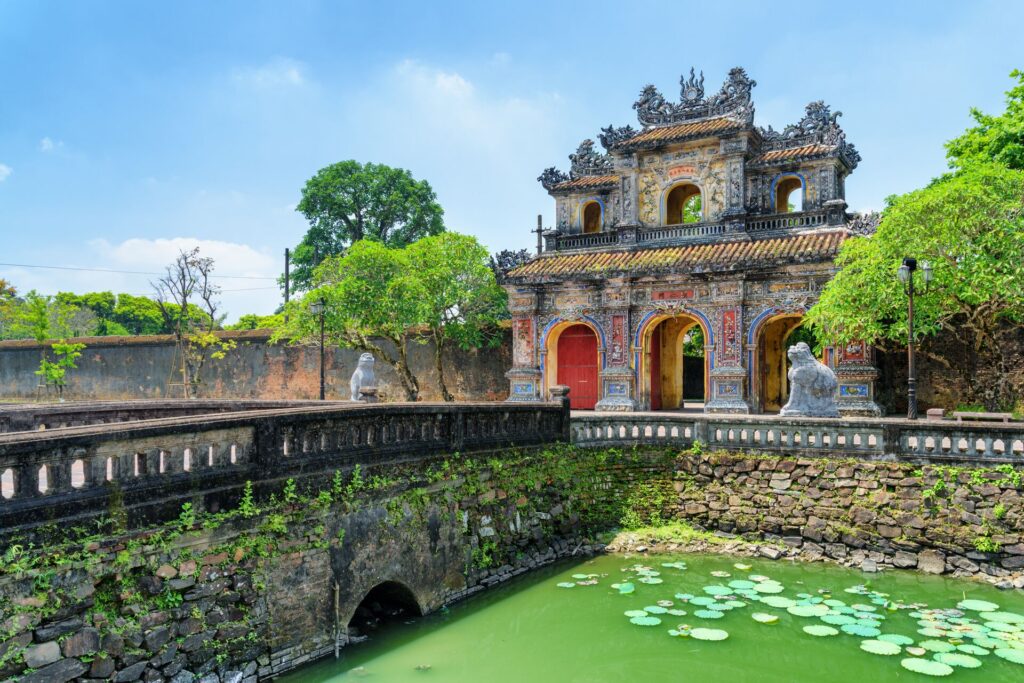
Hue has a reputation among Vietnamese people as being the most romantic city in the country, and your Luxury Gold trip to Hue will show you the most beautiful sides of it. You’ll stay at Pilgrimage Village, a tranquil hotel situated among leafy trees and quiet countryside. This is your oasis, where you can take part in meditation, yoga or tai chi classes in your free time, and unwind in the steam bath. When you’re out and about, you’ll be cycling through rice fields through the countryside to Thanh Toan village, where you can visit the lively local market, bargain with the locals and see traditional houses. Soak up the agricultural way of life, a suitable contrast to the city.
No trip to Hue is complete without a visit to the UNESCO World Heritage Site of the Imperial Citadel, a place of historical significance and architectural beauty. Learn about Emperor Gia Long, the first ruler of the Nguyen Dynasty, who made this the center of a unified Vietnam.
For a truly unique experience you’ll meet celebrated painter and singer, Camille Huyen, dining at her home, the fascinating Ben Xuan Garden House Theatre in Hue. Prepare for a memorable meal and private concert, hearing from her and her husband about their fascinating lives.
Take to the water on a boat ride to the private museum of Tran Dihn Son, whose great-grandfather was a high-ranking mandarin during the Nguyen Dynasty, where you can see the vast collection of rare antiquities collected by him and his ancestors.
See it on: Spirit of Vietnam
Related reading: Hue is Where the Heart is: In Conversation With Artist Camille Huyen
Udaipur, India

Udaipur goes by many nicknames such as ‘City of Lakes’ or ‘Venice of the East’, famous not only for its lakes but also its palaces. On a Luxury Gold journey you’ll witness the city’s historical grandeur as you visit the City Palace complex that towers over the banks of Lake Pichola and lay eyes on the intricate Ranakpur’s Jain Temples, a marvel made up of almost 1500 white marble pillars. Later on, you’re able to cruise the serene waters of Lake Pichola or explore the old city’s colorful bazaar.
You’ll truly experience Udaipur’s palatial architecture as you stay in The Leela Palace Built in the style of a grand Maharaja’s palace, The Leela Palace evokes the mystique of a bygone age where refined service and regal majesty combine to present an unparalleled experience.
See it on: Imperial Rajasthan
Bali, Indonesia
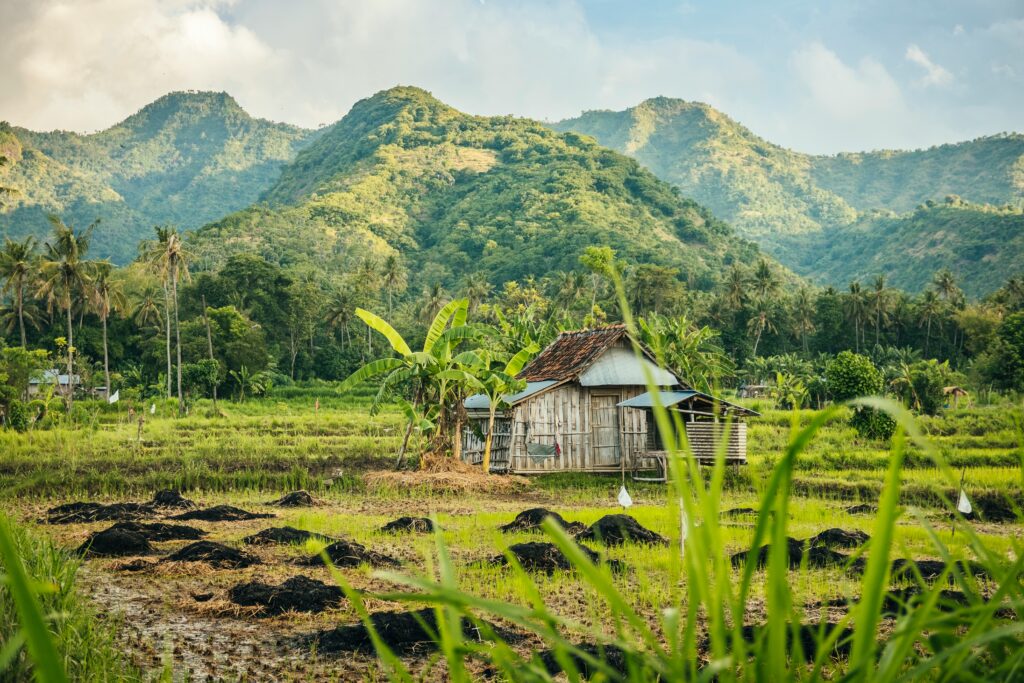
Bali is a well-trodden destination ever since 2010’s Eat, Pray, Love with Julia Roberts – but there are still relatively undiscovered spots where you can avoid the crowds while taking in Bali’s unparalleled beauty. One of those is Amed, an East Bali beach town and something of a hidden gem. One of the best spots in Asia for scuba diving in the world at Amed Reef, yoga classes overlooking the island at Blue Earth Village, or sundowners at the clifftop infinity pool at Sunset Point, Amed offers a laid-back vacation with plenty to see and do.
Hoi An, Vietnam
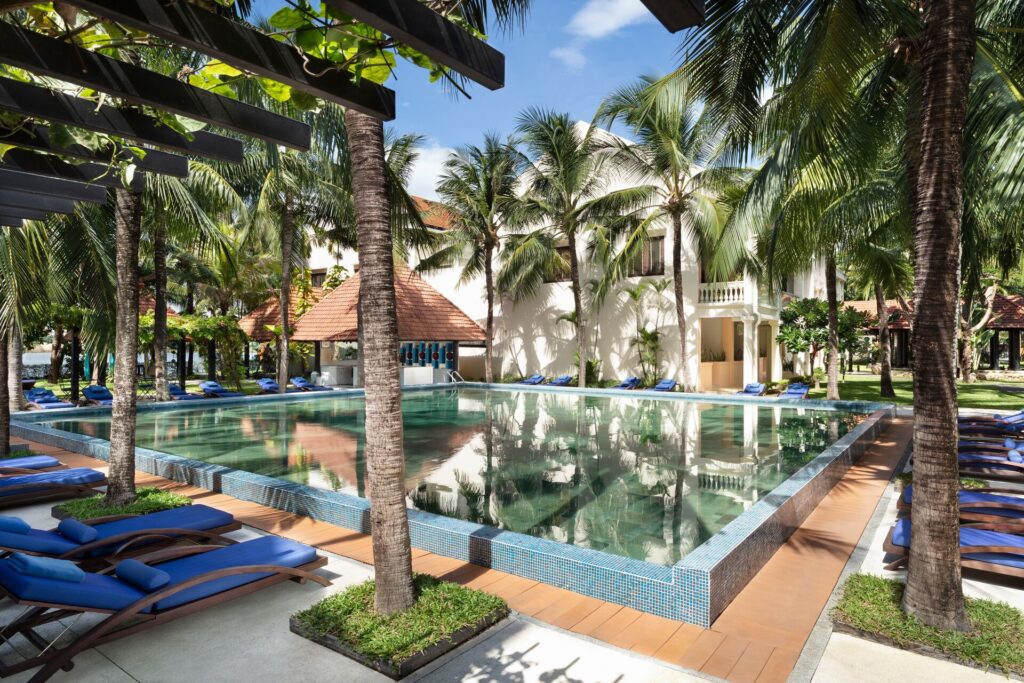
Vietnam’s glowing, lantern-filled city of Hoi An is well-renowned as one of the country’s most romantic places to visit. When you journey with Luxury Gold, you’ll stay at the Anantara Hoi An Resort on the banks of the Thu Bon River. Just moments away from the historic part of Hoi An, this tranquil hotel overlooks the river where you can take in the views from your sunbed, or make use of its spa services when you’re not exploring. Hoi An’s ancient Old Town is a UNESCO World Heritage Site, and you’ll explore this charming, historic area seeing well-preserved buildings that date back several centuries, spotting hundreds of colorful lanterns along the way.
When you’re not in the town itself, you’ll visit the beautiful Cam Thanh Village with its dense coconut jungles, learning its history during the Vietnam War and its current status as a supplier of seafood, vegetables and rice. Glide across the water in a traditional bamboo-basket boat to the Thanh Dong village where you’ll hear about local farming customs, continuing through a peaceful water coconut forest to a riverside restaurant overlooking the rice fields. Get stuck into a hands-on cooking class alongside a local chef – and enjoy your hard work for lunch.
See it on: Spirit of Vietnam
Kobe, Japan

Don’t overlook cosmopolitan Kobe when thinking of the best places to visit in Asia. Here you can explore the bustling city while still being surrounded by sea and mountains when in downtown Kobe. Walking through Kobe is the best way to see the city, which is on the smaller side compared to goliaths like Tokyo. It’s all too easy to eat and drink your way round Kobe, home of the world-renowned Kobe beef – it won’t taste better than in its home city. Wakkoqu is one of the best restaurants to try Kobe beef, where you can watch the chef prepare your meal in front of you. Kobe is also one of Japan’s leading areas for sake brewing, with sake brewery tours showing you the process from grain to bottle. To relax away from the bustle of city life, visit one of the most famous hot springs in Japan, Arima Onsen, just 30 minutes from downtown Kobe but still within the city limits. Make sure to head out of the city one evening to the mountains where you can see the city lights sparkle, known as the “million dollar night view”.
Luang Prabang, Laos
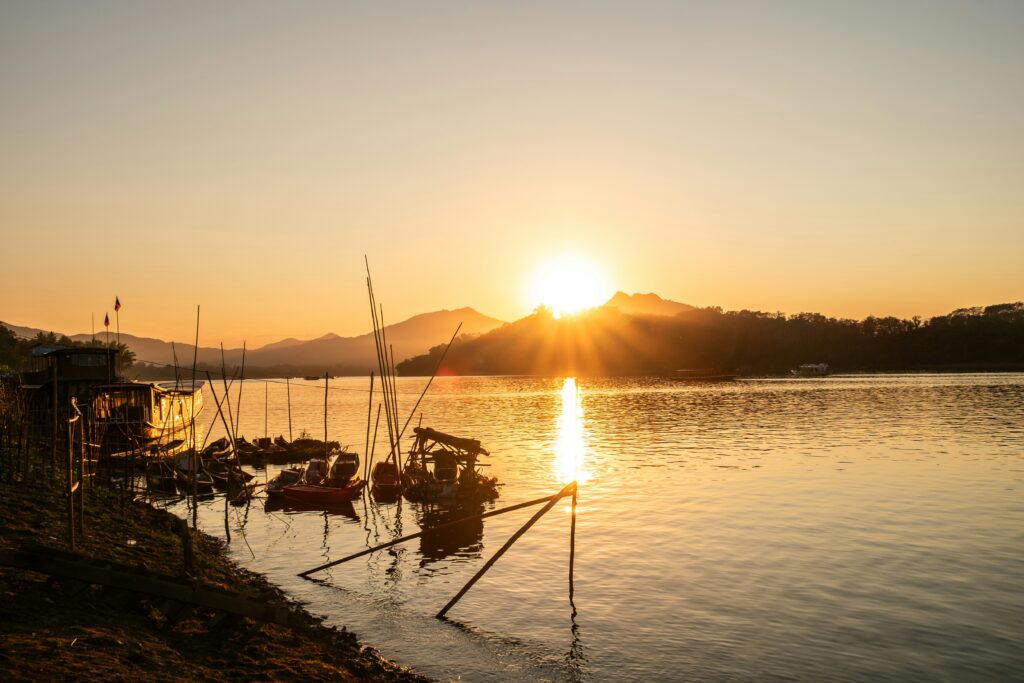
Step back in time when you visit Luang Prabang, with its well-preserved colonial architecture and traditional Lao style – the town is also UNESCO World Heritage Site. When you travel with Luxury Gold, the Luang Say Residence will be your home, designed in an elegant colonial style. This 5-star boutique hotel offers breathtaking views of the surrounding mountain ranges, while you can stroll through the lush tropical gardens within the hotel itself. You’ll rise with the sun to participate in the centuries-old Buddhist tradition of offering alms to the monks from the ancient temples of Luang Prabang, sharing this deeply spiritual ceremony with the local people.
Ascend the sacred mountain, Mount Phousi, taking in the natural beauty from the top as you spot the confluence of the Mekong and Nam Khan rivers with the jungle-clad mountains rising in the distance. Perhaps you’ll even spot the place where you’ll take a sunset cruise along the Mekong River later on, observing rural life along the tree-lined banks of this magnificent river while enjoying a sundowner and all the burning colors of the magnificent sunset.
See it on: Sensational Vietnam and Laos
Discover the best places to visit in Asia on a luxury Asia tour with Luxury Gold.



